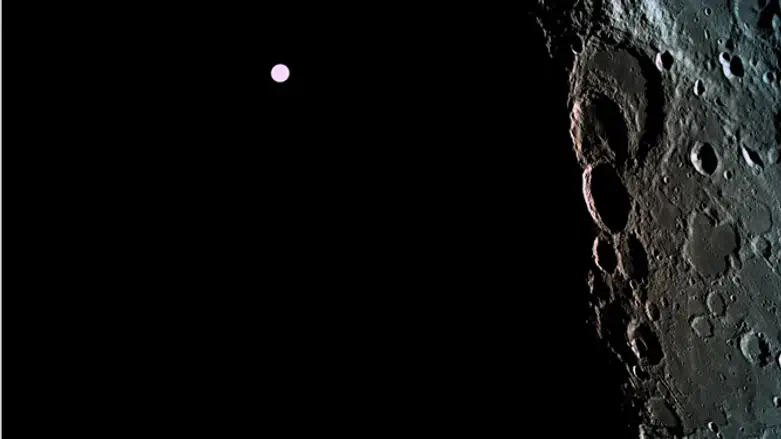
Israel's first spacecraft to the moon was expected to make its historic landing there Thursday, making the Jewish state the fourth and smallest country to complete the trip.
The landing is scheduled for around 10:25 PM Israel time.
So far, only Russia, the United States and China have made the 384,000-kilometer (239,000-mile) journey and landed on the Moon.
Israeli NGO SpaceIL and state-owned Israel Aerospace Industries (IAI), the two main partners, describe the project as the "world's first spacecraft built in a non-governmental mission," with philanthropist Morris Kahn putting up $40 million of the $100 million budget.
Other partners who joined later come from "the private sector, government and academia," the IAI website says.
Israeli Prime Minister Binyamin Netanyahu, fresh off his victory in Tuesday's general election, was expected to watch from the control room in Yehud, near Tel Aviv.
The country's president, Reuven Rivlin, has invited 80 middle school space buffs to view the landing with him at his official Jerusalem residence, his office said in a statement.
The 585-kilogram (1,290-pound) Beresheet, which means "Genesis" in Hebrew, is an unmanned spacecraft resembling a tall, oddly shaped table with round fuel tanks under the top.
Although the journey is 384,000 kilometers, Beresheet will travel a total of 6.5 million kilometers (4 million miles) due to a series of orbits.
Beresheet was launched from Cape Canaveral in Florida on February 22 with a Falcon 9 rocket from Elon Musk's private US-based SpaceX company.
Its speed has reached 10 kilometers per second, (36,000 kilometers per hour).
For Israel, the landing itself is the main mission, but the spacecraft also carries on its one-way trip a scientific instrument to measure the lunar magnetic field, which will help understanding of the moon's formation.
"We are all very exited," a senior IAI engineer, identified only as Daniel because of the sensitivity of his job, told Israeli public radio four hours before the scheduled landing time.
"We've checked everything that can be checked but always something can go wrong."
The data will be shared with US space agency NASA.
The craft also carries a "time capsule" loaded with digital files containing a Bible, children's drawings, Israeli songs, memories of a Holocaust survivor and the blue-and-white Israeli flag.
The project began as part of the Google Lunar XPrize, which in 2010 offered $30 million in awards to encourage scientists and entrepreneurs to come up with relatively low-cost moon missions.
Although the Google prize expired in March without a winner, Israel's team pledged to push forward.
The project includes other partners, among them the Swedish Space Corporation, whose ground satellite station network provided support.
NASA has made its Deep Space Network available to transmit data and has installed a small laser retroreflector aboard the lander to test its potential as a navigation tool.
Asked in December whether the project had so far gone as planned, SpaceIL co-founder Yariv Bash said "hell no".
"Back when we got started, we thought it was going to be a two-year project, the budget would be less than $10 million, and the spacecraft will weigh less than five kilograms," he said.
"And here we are eight years later with a project with a budget of almost $100 million."
The Israeli mission comes amid renewed global interest in the moon, 50 years after American astronauts first walked on its surface.
China's Chang'e-4 made the first-ever soft landing on the far side of the moon on January 3, after a probe sent by Beijing made a lunar landing elsewhere in 2013.
US President Donald Trump's administration announced in March it was speeding up plans to send American astronauts back to the moon, bringing forward the target date from 2028 to 2024.
India hopes to become the fifth lunar country in the spring with its Chandrayaan-2 mission. It aims to put a craft with a rover onto the moon's surface to collect data.
Japan plans to send a small lunar lander, called SLIM, to study a volcanic area around 2020-2021.
The United States remains the only country to have walked on the moon, with 12 astronauts having taken part in six missions between 1969 and 1972.